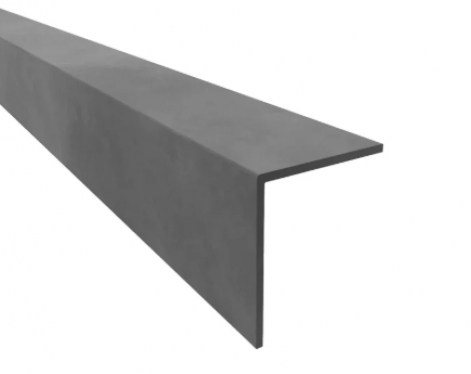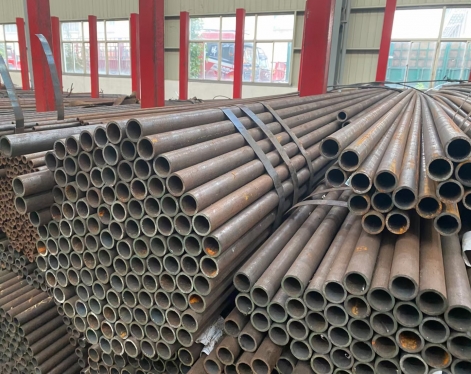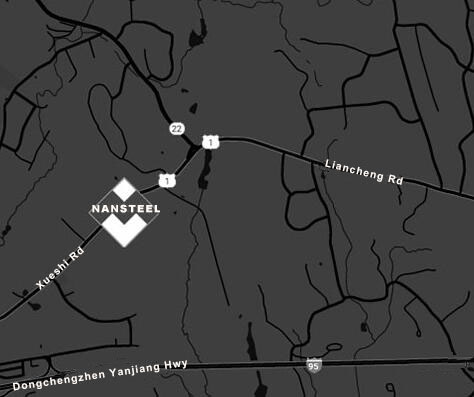Angle steel—also called angle iron or L-angle—is a common structural steel product characterized by two flat legs that meet at a 90-degree angle. Its strength and adaptability make it suitable for a wide range of applications, including construction, bracing, framing, and equipment support. Angle steel comes in two main types: equal angle steel, where both legs are the same length, and unequal angle steel, where one leg is longer than the other. The choice between the two depends on the structural needs of the project.
Standard Angle Steel Size Parameters
Angle steel sizes are defined by the dimensions of their two legs and the thickness of the material. The most common parameters include:
1. Leg Lengths: Typically range from 20×20 mm to 200×200 mm for equal angles, and 30×20 mm to 200×100 mm for unequal angles.
2. Thickness: Varies from 2 mm to 20 mm, depending on the application and required load-bearing capacity.
3. Bar Length: Standard manufacturing lengths are usually 6 meters or 12 meters, but custom lengths can be produced as needed.Sizes are commonly expressed in the format Leg × Leg × Thickness (e.g., 50×50×5 mm), and are available in both metric and imperial units depending on regional standards. Angle steel dimensions conform to international standards such as GB (China), ASTM (USA), EN (Europe), and JIS (Japan).

Angle Steel Size Chart (Equal Angle Steel, Metric Units)
Angle Steel Size Chart (Unequal Angle Steel, Metric Units)
Methods of processing angle steel
1. Cutting: Cutting is one of the most common methods for processing angle steel. You can use a cutting machine or other equipment to cut the angle steel as needed. The specifications and dimensions of the angle steel can be determined by formula calculation and professional parameters to determine the required cutting length and angle.
2. Welding: Welding is the process of joining two angle steels together. Various welding methods can be used, such as arc welding and gas shielded welding. During welding, attention must be paid to the surface cleanliness of the angle steel and the welding process to ensure weld strength and quality.
3. Bending: Bending involves bending angle steel into a desired shape. Using equipment such as a press brake, angle steel can be bent to a specific angle and radius. During the bending process, it's important to maintain the proper bending force and angle to avoid damage.
Applications of Angle Steel
Angle steel is a highly adaptable structural material valued for its strength, rigidity, and ease of processing. It is widely used across industries in the following ways:
1. Construction and Building Structures
Employed in structural elements such as beams, columns, trusses, and bracing for residential, commercial, and industrial buildings.
2. Machinery and Equipment Frameworks
Used to build support frames, reinforcement structures, conveyors, storage systems, and platforms.
3. Infrastructure and Transportation
Applied in bridges, transmission towers, railway tracks, and guardrails due to its durability and load-bearing capacity.
4. Metal Fabrication and Welding
Ideal for manufacturing frames for trailers, gates, ladders, and various custom steel structures.
Read more: The Difference between Angle Steel and Channel Steel
Standard Angle Steel Size Parameters
Angle steel sizes are defined by the dimensions of their two legs and the thickness of the material. The most common parameters include:
1. Leg Lengths: Typically range from 20×20 mm to 200×200 mm for equal angles, and 30×20 mm to 200×100 mm for unequal angles.
2. Thickness: Varies from 2 mm to 20 mm, depending on the application and required load-bearing capacity.
3. Bar Length: Standard manufacturing lengths are usually 6 meters or 12 meters, but custom lengths can be produced as needed.Sizes are commonly expressed in the format Leg × Leg × Thickness (e.g., 50×50×5 mm), and are available in both metric and imperial units depending on regional standards. Angle steel dimensions conform to international standards such as GB (China), ASTM (USA), EN (Europe), and JIS (Japan).

Angle Steel Size Chart (Equal Angle Steel, Metric Units)
| Size (Leg × Leg × Thickness) mm | Approx. Weight (kg/m) |
| 25 × 25 × 3 | 1.12 |
| 30 × 30 × 3 | 1.39 |
| 40 × 40 × 4 | 2.96 |
| 50 × 50 × 5 | 4.67 |
| 60 × 60 × 6 | 6.82 |
| 70 × 70 × 7 | 9.37 |
| 75 × 75 × 8 | 11.30 |
Angle Steel Size Chart (Unequal Angle Steel, Metric Units)
| Size (Leg1 x Leg2 x Thickness) mm | Approx. Weight (kg/m) |
| 40x25x3 | 1.52 |
| 50x30x4 | 2.84 |
| 63x40x5 | 4.95 |
| 75x50x6 | 7.25 |
| 90x56x7 | 10.25 |
| 100x63x8 | 13.40 |
| 125x75x9 | 17.70 |
Methods of processing angle steel
1. Cutting: Cutting is one of the most common methods for processing angle steel. You can use a cutting machine or other equipment to cut the angle steel as needed. The specifications and dimensions of the angle steel can be determined by formula calculation and professional parameters to determine the required cutting length and angle.
2. Welding: Welding is the process of joining two angle steels together. Various welding methods can be used, such as arc welding and gas shielded welding. During welding, attention must be paid to the surface cleanliness of the angle steel and the welding process to ensure weld strength and quality.
3. Bending: Bending involves bending angle steel into a desired shape. Using equipment such as a press brake, angle steel can be bent to a specific angle and radius. During the bending process, it's important to maintain the proper bending force and angle to avoid damage.
Applications of Angle Steel
Angle steel is a highly adaptable structural material valued for its strength, rigidity, and ease of processing. It is widely used across industries in the following ways:
1. Construction and Building Structures
Employed in structural elements such as beams, columns, trusses, and bracing for residential, commercial, and industrial buildings.
2. Machinery and Equipment Frameworks
Used to build support frames, reinforcement structures, conveyors, storage systems, and platforms.
3. Infrastructure and Transportation
Applied in bridges, transmission towers, railway tracks, and guardrails due to its durability and load-bearing capacity.
4. Metal Fabrication and Welding
Ideal for manufacturing frames for trailers, gates, ladders, and various custom steel structures.
Read more: The Difference between Angle Steel and Channel Steel









